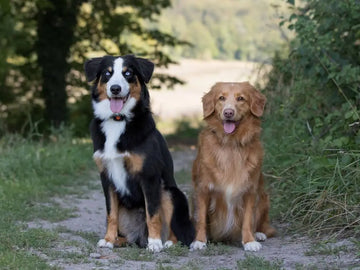Introduction
Getting your dog to play with toys is one of the best ways to keep them active, mentally stimulated, and happy. However, not all dogs naturally show interest in toys, and some may need a little encouragement. If your dog doesn’t seem to enjoy their toys, don’t worry. There are plenty of ways to spark their interest and help them develop a love for play. This guide will provide you with effective tips and strategies to help your dog enjoy their toys, whether it's a simple fetch toy for dog play or a more interactive dog treat toy.
Choosing the Right Toys for Your Dog
The first step in encouraging your dog to play with toys is choosing the right ones. Different dogs have different preferences based on their size, breed, and personality. For example, a large dog might be more interested in a durable dog tug of war toy that they can grab and pull, while a small dog may prefer a soft ball or squeaky toy. It’s important to consider your dog’s chewing habits too—if your dog likes to chew, look for sturdy toys that can withstand their jaws, such as rubber or nylon-based toys. If your dog is more of a fetch lover, a fetch toy for dog could be a great starting point to pique their interest.
Make Playtime Interactive
One of the best ways to get your dog excited about toys is to make playtime more interactive. Dogs are social creatures and enjoy activities that involve their owners. If your dog is not responding to their toys, try engaging them by moving the toy around in front of them. For example, toss a fetch toy for dog in their direction or roll it across the floor. The movement can catch their attention and prompt them to chase the toy. Use a cheerful tone and encourage your dog as they interact with the toy, reinforcing the positive behavior with praise or treats.
Positive Reinforcement: Reward Play
Dogs thrive on positive reinforcement, and this principle can be especially effective when encouraging your dog to play with toys. Every time your dog engages with a toy, whether they’re chewing it, playing tug-of-war, or simply sniffing it, reward them with a treat, a toy, or lots of praise. By linking play with positive outcomes, your dog will begin to associate the toy with a fun and rewarding experience. This association will encourage them to interact with the toys more frequently. For example, using a dog treat toy filled with tasty rewards can make playtime more enticing and enjoyable.
Create Fun Games with Toys
Dogs love to play games, so why not make their toys part of the fun? Instead of just leaving the toys lying around, incorporate them into games that your dog already loves. If your dog enjoys fetch, use a fetch toy for dog to throw and retrieve. Alternatively, if your dog has a high prey drive, they might enjoy a game of tug-of-war with a dog tug of war toy. These games are not only fun but also a great way to strengthen the bond between you and your dog. If your dog enjoys problem-solving, try using a dog treat toy that dispenses treats as they play, stimulating their mind while they work for a reward.
Give Them Space and Time
Sometimes, the key to getting your dog to play with toys is patience. Not every dog will immediately warm up to toys, and some may take a while to figure out how to engage with them. Allow your dog some space and time to explore the toys on their own. Don’t force them to play, as this can create negative associations. If your dog doesn’t seem interested in a toy right away, give them some time and try again later. Over time, with enough encouragement and positive reinforcement, your dog will begin to see toys as enjoyable objects rather than just strange items.
Rotate Toys to Keep Things Fresh
Dogs, like people, can get bored of playing with the same thing over and over. To keep your dog interested in their toys, try rotating them regularly. Instead of always giving your dog access to every toy, you can put some toys away for a few days and introduce new ones. This strategy will keep the toys feeling fresh and exciting. If you notice your dog getting bored with their current selection, try switching up the types of toys—maybe one day they’ll love a dog tug of war toy, and another day, they’ll be more interested in a dog treat toy that keeps them engaged longer.
Social Play and Interaction
Many dogs enjoy socializing, and this can extend to playtime. If you have more than one dog, allow them to play together. Seeing another dog interact with toys can inspire your dog to join in. Dogs often learn from each other, and the excitement of another dog playing can be contagious. If you don’t have another dog at home, consider arranging playdates with friends or family members who have dogs. Social play can make toys more appealing and help your dog understand that playtime is not only fun but also something to be shared.
Conclusion
Getting your dog to play with toys doesn’t have to be difficult. By choosing the right toys, making playtime interactive, and using positive reinforcement, you can encourage your dog to engage with their toys and develop healthy play habits. Whether it’s a fetch toy for dog that keeps them running, a dog tug of war toy for a fun challenge, or a dog treat toy that rewards their efforts, there’s something for every dog to enjoy. With patience and creativity, your dog will soon learn to love their toys and the playtime that comes with them, keeping them both physically and mentally happy!










